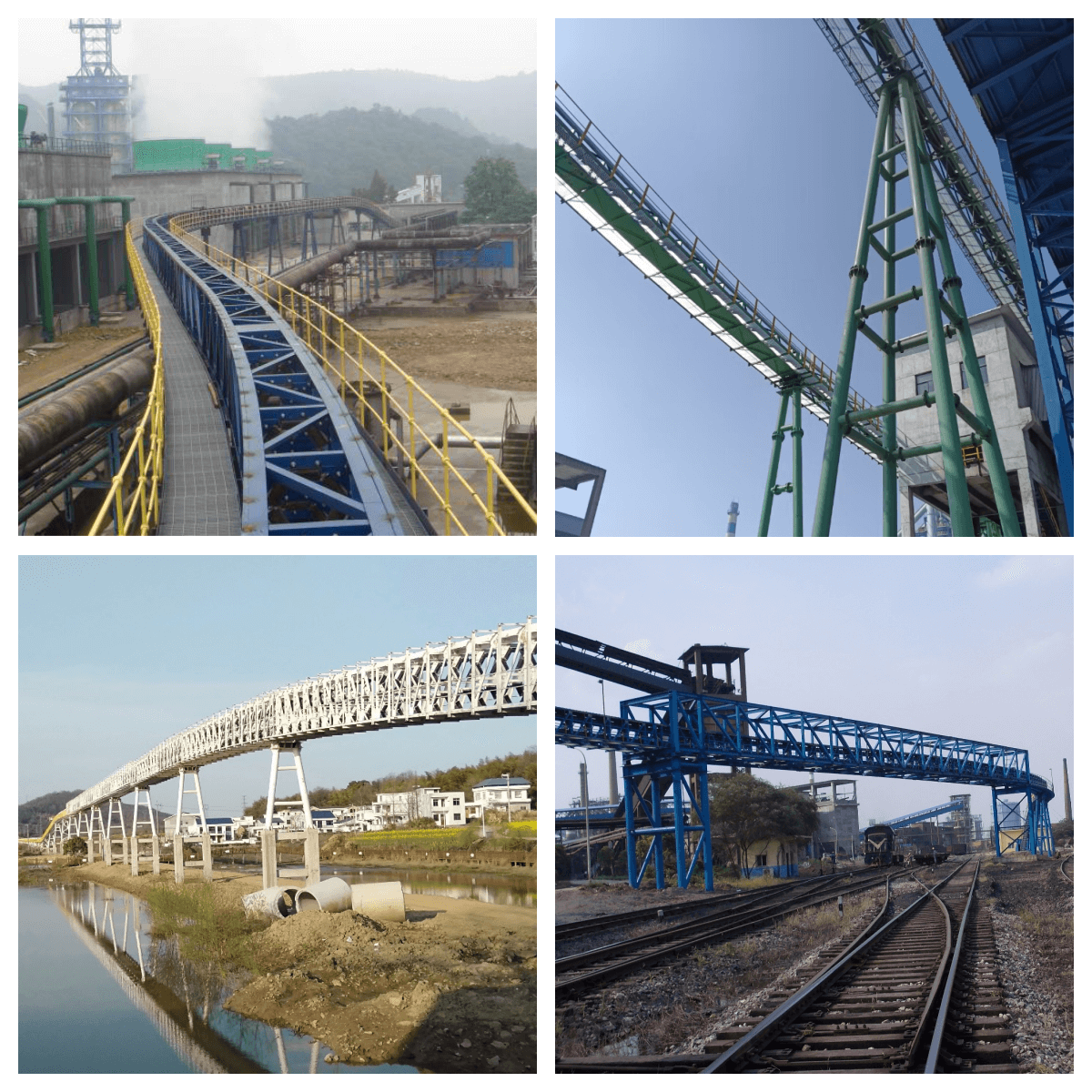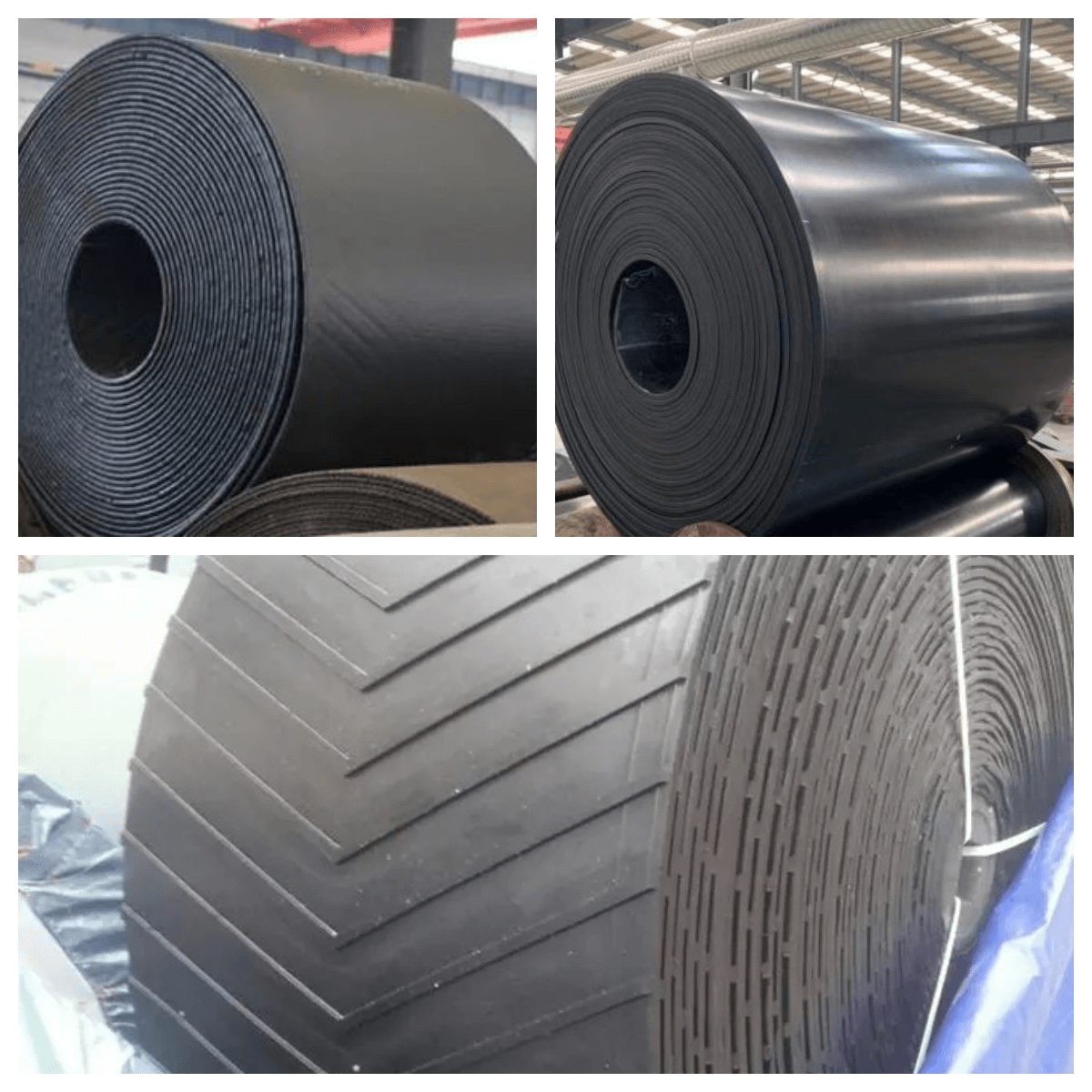A Conveyor Belt is a crucial component of equipment in many industries. Its range of applications is extremely wide, covering mining, coal, chemicals, food processing, and electronics. Choosing the right conveyor belt is essential for boosting efficiency and reducing costs.

Types of Conveyor Belts and Their Applications
Long Distance Conveyor Belt
Long-distance conveyor belts are specifically designed for the long-haul transportation of materials. They are ideal for scenarios like mines, ports, and power plants. These belts can significantly shorten material transit times and greatly enhance production efficiency. They typically require higher strength and lower elongation to handle the challenges of long-distance operation.
Pipe conveyor Belt
Pipe conveyor belts feature a unique enclosed design that effectively prevents material spillage and dust dispersion during transport. This belt is particularly suitable for locations with stringent environmental protection requirements, and applications needing to prevent material contamination or protect against external environmental influences, such as chemical plants and food processing facilities. Materials are enclosed within a circular tube during transport, ensuring clean conveying.
Large Inclination Conveyor Belt
Large inclination conveyor belts are suitable for scenarios requiring steep angles of ascent or descent (often exceeding the limits of standard belts). They effectively overcome significant height differentials and are widely used at construction sites, mines, and other industries requiring vertical or near-vertical material conveying. Special structures like wavy sidewalls (cleated belts) or patterned belts are commonly used.
Troughed Conveyor Belt
Troughed conveyor belts have a relatively simple structure, making them easy to install and maintain. They can meet the conveying needs of various bulk materials and are one of the most common types of conveyor belts. They are widely used in logistics and warehousing centers, material transfer in production lines, and the food processing industry, among others. The trough design helps increase capacity and prevent material spillage.

How to Choose the Right Conveyor Belt for Your Industry?
By Material
- Rubber Conveyor Belt: Suitable for conveying most industrial materials, offering good wear resistance, impact resistance, and elasticity. It's an ideal choice for heavy industries like mining, coal, and ports. Based on the properties of the cover rubber, they can be further categorized into types such as cold-resistant, heat-resistant, acid/alkali-resistant, and flame-retardant.
- PVC/PU Conveyor Belt: Primarily used in the food processing, electronics manufacturing, and packaging industries. PVC belts offer good cost-effectiveness for general needs; PU belts provide superior wear resistance, oil resistance, and ease of cleaning, making them the preferred choice for industries with strict hygiene requirements like food and pharmaceuticals. They comply with food-grade certification standards (e.g., FDA, EU).
- Steel Cord Conveyor Belt: Using high-strength steel cords as the core, these belts offer extremely high tensile strength and an exceptionally long service life. They are specifically designed for long-distance, high-capacity, high-tension heavy-duty transportation, commonly found in large-scale mining operations and port terminals.
- Nylon (NN) Conveyor Belt: With nylon canvas as the carcass, these belts offer high strength, good wear resistance, large elasticity, and excellent impact resistance. They are widely used for medium-to-short distance material conveying in industries like mining, building materials, and metallurgy.
- Polyester (EP) Conveyor Belt: With polyester canvas as the carcass, these belts are lightweight, have a high modulus, offer good heat resistance, excellent dimensional stability, and minimal loss of strength when wet. They are suitable for medium-to-long distance, high-load material conveying.
By Structure
- Flat Belt: The belt surface is flat, suitable for horizontal or low-incline conveying. Widely used in logistics sorting, warehousing and handling, packaging lines, etc.
- Wavy Edge (Cleated) Belt: Features continuous wavy sidewalls along the edges; cross ribs can be added. Particularly suited for high-angle (even vertical) conveying, effectively preventing material rollback. Common in industries needing to elevate materials like coal, mining, and building materials.
- Pipe Conveyor Belt: The belt forms a closed tube during operation, fully enclosing the material to prevent dust emission and spillage. Especially suitable for long-distance conveying where environmental protection is paramount, space is constrained, or curved paths are required.
- Patterned (Chevron) Belt: The belt surface features raised patterns (e.g., herringbone, diamond, ribbed) to increase friction between the belt and material. Suitable for inclined conveying (angles typically less than wavy edge belts) to prevent material slippage and rollback.
By Application
- General-Purpose Belt: Meets the routine conveying needs of most industries, suitable for transporting bulk materials or unit loads without special requirements.
- Heavy-Duty Belt: Specifically designed for transporting heavy, sharp, or highly abrasive materials like ore, coal, and steel. Offers superior impact resistance, tear resistance, and wear resistance for harsh environments in mining, steel mills, and large ports/terminals.
- Food-Grade Belt: Complies with strict food safety and hygiene standards (e.g., FDA, HACCP). The material is non-toxic and odorless, easy to clean and sanitize, with a smooth surface resistant to bacterial growth. Essential for food processing, beverages, bakery, meat processing, and related industries.
- Chemical-Resistant Belt: Made with special rubber compounds (e.g., Nitrile NBR, EPDM) or coatings to resist oils, chemicals, or other corrosive substances. Extends belt life in demanding environments like chemical, pharmaceutical, or electroplating industries.
- Flame Retardant / Anti-static Belt: Suitable for underground coal mines, flammable/explosive atmospheres, or conveying static-prone materials. Features flame-retardant and conductive properties to enhance operational safety.
- Heat-Resistant / Cold-Resistant Belt: Special formulations maintain stable performance under extreme temperatures (high heat or cold). Used in industries like metallurgy, cement, and frozen food processing.
-

Selection Advice: When choosing a conveyor belt, comprehensively consider the following key factors:
- Material Characteristics: Type, particle size, moisture content, temperature, abrasiveness, stickiness, corrosiveness, or hygiene requirements.
- Conveying Parameters: Capacity (tonnage), belt speed, conveying distance, lift/drop height (incline angle).
- Operating Environment: Temperature, humidity, exposure to chemicals, oils, dust, explosion risks, or harsh outdoor weather.
- Equipment Parameters: Pulley diameter, idler spacing, tensioning method, etc.
- Special Requirements: Such as flame retardancy, anti-static properties, magnetic properties, precise positioning needs, etc.
If you are struggling to choose a conveyor belt or are unsure which product best fits your industry needs, contact Zoomry. We offer complimentary professional consultation services, tailoring the optimal conveyor belt solution based on your specific operating conditions and requirements. Our after-sales service team is available 24/7 to ensure any issues are resolved swiftly, keeping your production line stable and highly efficient.

 ZOOMRY
ZOOMRY

